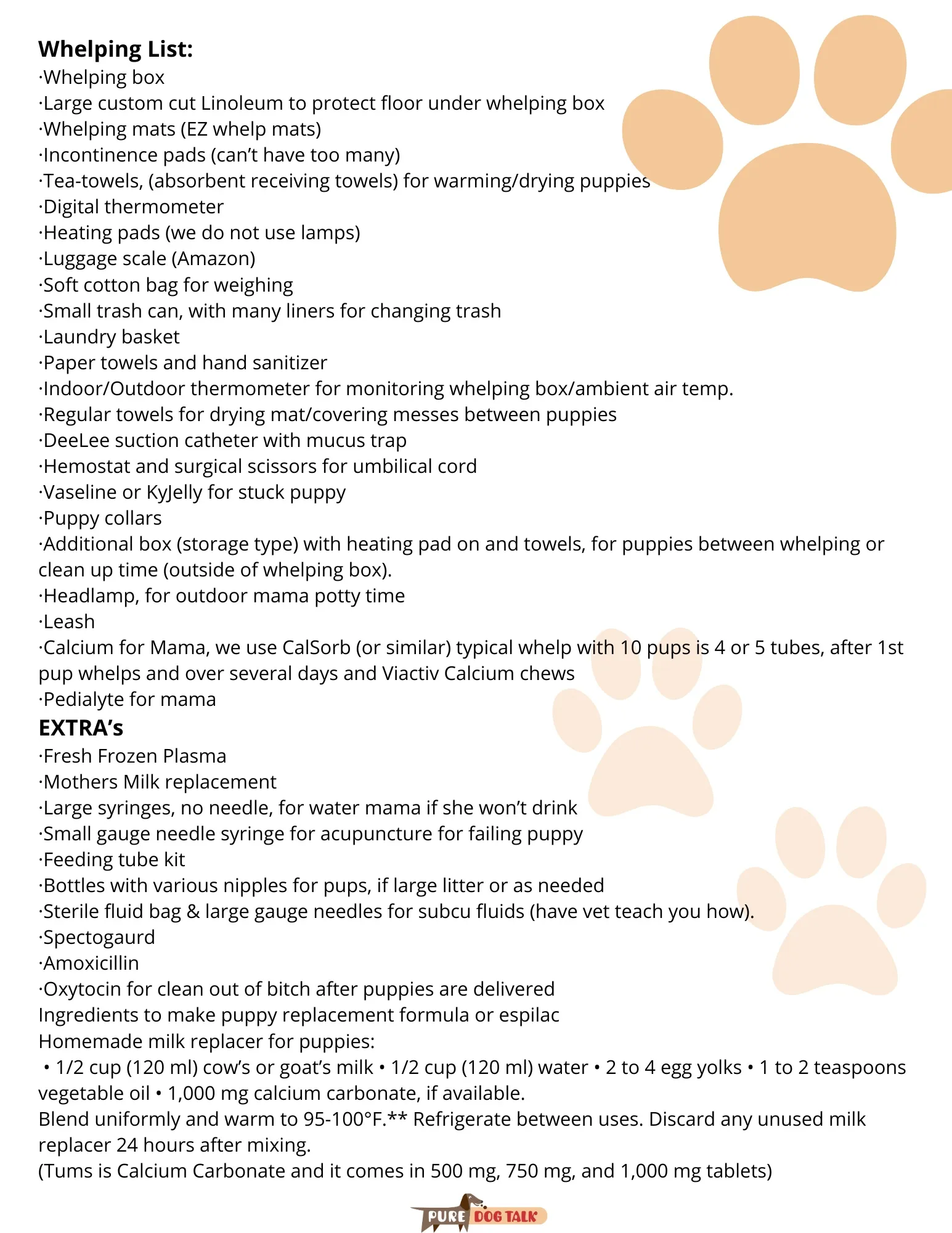Preparing for a new litter of puppies is an exciting yet critical time for any dog owner or breeder. Ensuring a safe, clean, and comfortable environment for the mother and her newborns is paramount. As seasoned dog care experts at “Dog Care Story,” we understand the intricacies involved. This guide, inspired by Laura Reeves’ decades of experience and insights from Pure Dog Talk, will walk you through the “must-have” Whelping Supplies and setup considerations to ensure a successful and stress-free delivery, allowing you to welcome your new furry family members with confidence and peace of mind.
The Foundation: Your Whelping Box Setup
The whelping box is the central hub for your mother dog and her puppies during their first few weeks of life. Its design and construction are crucial for both safety and hygiene.
Size and Accessibility
The ideal whelping box must be spacious enough for your female dog to move comfortably, allowing her to be both close to and, at times, slightly away from the heat source where the puppies primarily reside. The dimensions will largely depend on the size of your female and the expected litter size. For the initial couple of weeks, the entire litter will be confined to this space, and for some larger breeds, this period may extend even longer. Beyond the immediate whelping period, you’ll need a system that allows the mother to exit the box for short breaks, returning easily to nurse her pups while also having some personal space away from their constant demands.
Prioritizing Sanitation and Disinfection
One of the most critical aspects of your whelping box, besides its size, is its ability to be thoroughly disinfected. While homemade whelping boxes constructed from materials like plywood are common, raw wood poses a significant challenge. If left unsealed, raw wood can harbor contagions that are impossible to eliminate through standard disinfection methods. Therefore, if you opt for a wooden box, it is absolutely essential to seal the wood to prevent the accumulation of bacteria and viruses, especially if you plan to use the box for multiple litters. Hard-sided, non-porous materials are generally easier to clean and sanitize effectively.
The Importance of Pig Rails
For any hard-sided whelping box, pig rails are a non-negotiable safety feature. These rails typically extend about two inches wide and two inches out from the sides, positioned roughly two inches above the floor. They create a vital buffer zone where newborn puppies can safely retreat if the mother inadvertently rolls over or lies down too close. This simple addition significantly reduces the risk of accidental crushing, providing peace of mind during those vulnerable first few days.
Creating the Ideal Whelping Environment
Beyond the box itself, the surrounding environment plays a pivotal role in the comfort and well-being of the mother and her newborns.
Location and Privacy
The location of your whelping box should be carefully chosen. It is strongly recommended to place it in a low-traffic area, particularly during the actual whelping process. Mother dogs prefer a private, cave-like environment for giving birth, shying away from an audience. Consider setting up the box in a quiet corner or a separate room to minimize disturbances. You can further enhance privacy by draping a sheet over the top of an exercise pen surrounding the whelping box, creating a secluded den for the family.
Maintaining Optimal Temperatures
Temperature control is paramount for newborn puppies, as they cannot regulate their own body temperature for at least the first two weeks of life. The ambient room temperature where the whelping box is located should ideally be around 70 degrees Fahrenheit (21 degrees Celsius). However, the immediate area within the whelping box where the puppies reside needs to be significantly warmer, at least 90 degrees Fahrenheit (32 degrees Celsius). Puppies are like “heat-seeking missiles”; they will instinctively move towards or away from heat sources to find their optimal comfort zone. A reliable heat source, such as a heat lamp or warming pad, is essential, ensuring there’s also a cooler spot for them to move to if needed. The mother will provide some warmth, but she cannot be there constantly.
 Essential whelping supplies laid out in a box, including heating pads and other tools for puppy care
Essential whelping supplies laid out in a box, including heating pads and other tools for puppy care
Protecting Your Floors: A Practical Solution
Accidents are inevitable with a new litter, and protecting your floors from urine, feces, and other fluids is a practical concern. While tarps have often been used, they are a less-than-ideal solution, prone to tearing and offering poor protection. A much more effective and durable alternative is a piece of cheap linoleum. Cut it to fit the dimensions of your entire puppy area, extending beyond the whelping box itself. This creates a waterproof, easily cleanable surface that can be rolled up and stored when not in use. Lay the linoleum down first, then place your whelping box on top, ensuring there’s ample space on the linoleum for puppies to relieve themselves as they grow older, keeping their sleeping area clean and separate.
Conclusion
The successful whelping of a litter of puppies is a rewarding experience that hinges on thorough preparation and the right whelping supplies. From a disinfected, spacious whelping box equipped with pig rails, to a quiet, temperature-controlled environment, every detail contributes to the health and safety of the mother and her precious newborns. By following these guidelines and investing in the essential gear, you’ll be well-equipped to provide the best possible start for your new litter, fostering a healthy and thriving environment from day one. Remember, careful planning today leads to happy, healthy puppies tomorrow.
References
- Reeves, L. (Host). (2023, June). Laura’s Puppy Whelping Tips and ‘Must Have’ Supply List. Pure Dog Talk [LIVE@5] live podcast. https://youtu.be/Wz6-4yGuMBk
